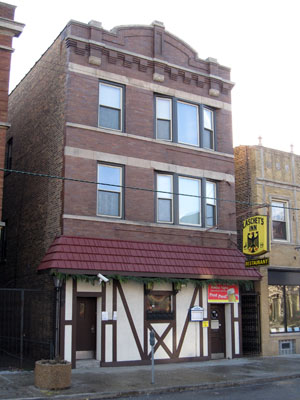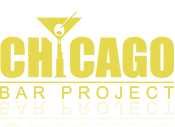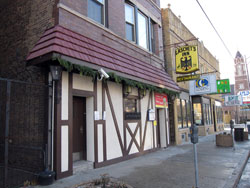 Though located outside of Chicago’s present day German-town, known as Lincoln Square, Laschet’s Inn opened when far more Germans inhabited a large swath of the North Side. Popularity of German food and drink has ebbed in recent years, as older German-Americans moved on and younger generations became more Americanized and less interested in the Old Country, its food and its culture. Recently, a rather interesting trend has emerged: there has been a net increase in the number of German bars with Glunz Bavarian Haus, Uberstein and Prost, and old standbys like Laschet’s are experiencing a new life and clientele. This is a welcome change, particularly as we approach a saturation point for “authentic” Irish pubs and flatpanel-filled sports bars. Laschet’s is also well known for serving an excellent selection of German fare, offering a satisfying selection of libations, and for its legendary founder and namesake, Karl Laschet.
Though located outside of Chicago’s present day German-town, known as Lincoln Square, Laschet’s Inn opened when far more Germans inhabited a large swath of the North Side. Popularity of German food and drink has ebbed in recent years, as older German-Americans moved on and younger generations became more Americanized and less interested in the Old Country, its food and its culture. Recently, a rather interesting trend has emerged: there has been a net increase in the number of German bars with Glunz Bavarian Haus, Uberstein and Prost, and old standbys like Laschet’s are experiencing a new life and clientele. This is a welcome change, particularly as we approach a saturation point for “authentic” Irish pubs and flatpanel-filled sports bars. Laschet’s is also well known for serving an excellent selection of German fare, offering a satisfying selection of libations, and for its legendary founder and namesake, Karl Laschet.
Laschet’s Inn is located on the south side of Irving Park Road, just east of Hamilton. O’Donovan’s (once Schulien’s) lies almost kitty-corner from Laschet’s, Windy City Inn just to the west and rival Resi’s Bierstube is found nearby on the north side of Irving and just to the east. At night, the black eagle of the German Coat of Arms, backlit in bright yellow, illuminates the inn’s Germanic facade at the base of an orange-brick three-flat. Once you step through the wooden door, you’ll find yourself in a small foyer where you’ll need to step up and pass through a pair of swinging wooden doors; if you don’t throw them wide open—in grand fashion—there’s a good chance you’ll get caught between them and make a somewhat less-than-splendid entrance…
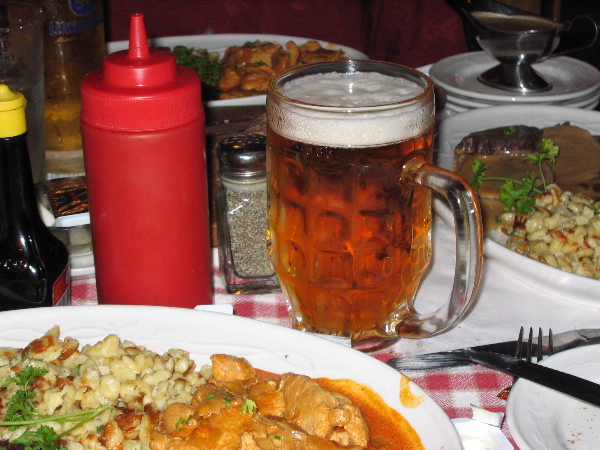 The interior at Laschet’s is rather narrow with a worn wooden bar runs the length of the eastern wall, under a paneled ceiling held up with dark beams of wood. In this area, you can grab a high-backed vinyl barstool, and entertain yourself with whatever’s on the four televisions (of the ancient, non-flatpanel variety…), or by taking in the German regalia that include a series of collector plates nailed to the bar backdrop, a part of the Berlin Wall, old German newspaper clippings and currency, photos from Chicago-based German festivals, and a Mickey Mouse phone. No German tavern is complete without an expansive collection of ceramic beer steins, which Laschet’s proudly displays, along with a complete set of glassware for all German ales: quarter-liter stemmed glasses, half-liter glasses, liter glass steins, the inevitable two-liter glass boot—always a crowd-pleaser—and an intricately decorated ceramic stein that holds a whopping 15 liters. As you would expect, Laschet’s features a fine selection of a dozen German beers on tap, including Lowenbrau, Jever, and one of my favorites, Spaten Optimater (one of several that are seasonally rotated). Twenty more can be found in bottles, including my favorite Austrian beer, Gosser Dark. Eight wines are available, most of which are German, as is an impressive variety of German aperitifs and liqueurs.
The interior at Laschet’s is rather narrow with a worn wooden bar runs the length of the eastern wall, under a paneled ceiling held up with dark beams of wood. In this area, you can grab a high-backed vinyl barstool, and entertain yourself with whatever’s on the four televisions (of the ancient, non-flatpanel variety…), or by taking in the German regalia that include a series of collector plates nailed to the bar backdrop, a part of the Berlin Wall, old German newspaper clippings and currency, photos from Chicago-based German festivals, and a Mickey Mouse phone. No German tavern is complete without an expansive collection of ceramic beer steins, which Laschet’s proudly displays, along with a complete set of glassware for all German ales: quarter-liter stemmed glasses, half-liter glasses, liter glass steins, the inevitable two-liter glass boot—always a crowd-pleaser—and an intricately decorated ceramic stein that holds a whopping 15 liters. As you would expect, Laschet’s features a fine selection of a dozen German beers on tap, including Lowenbrau, Jever, and one of my favorites, Spaten Optimater (one of several that are seasonally rotated). Twenty more can be found in bottles, including my favorite Austrian beer, Gosser Dark. Eight wines are available, most of which are German, as is an impressive variety of German aperitifs and liqueurs.
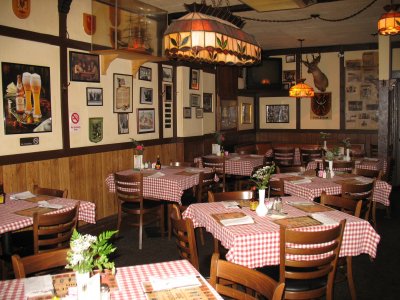 Once such concoction in the offing at Laschet’s is an “herb liqueur” called, “Killepitsch,” which is a lot like Jagermeister, except that Killepitsch tastes reasonably good – kind of like Finnish salmiaki with its salted black licorice taste. By having Killepitsch, Laschet’s reminds me of a time when I visited a German company in Koln (Cologne). Our host, a man named Horst who sported a cigarillo permanently attached to his lower lip, decided to take my Belgian colleague and I to sister city Dusseldorf for a tour of the restaurant-breweries of “Alt” there. “Alt” is the Dusseldorfian beer, which is a darker version of Koln’s “kolsch.” After a meal of Schweinhaxen (pork shank impressively presented, where you hunt for tender bits of meat from a pig’s knee), and visits to several ancient establishments, we were asked which version of Alt we liked best. Horst was dumbfounded when we told him that they were all good and that any difference was indiscernible to us. He assured us that there were many notable and significant differences that we were apparently too genetically inferior to notice… though this was not for lack of trying (read: drinking). To round out the evening, we visited Horst’s favorite hole-in-the-wall tavern that was just about to close. He ordered three rather tall shots of Killepitsch, which I had never had previously. In the American custom, we toasted and I threw down the shot. My Belgian colleague, more used to slowly quaffing Belgian ale, followed my lead and threw his down. Meanwhile, Horst had not seen this as he was busy slowly sipping his “shot.” Once he saw that we had finished ours and where watching him, while we snickered to ourselves, he proceeded not only to throw down his shot, but he also bought two more rounds thinking that we finished our Killepitsch so quickly because we liked it so much. Truth be told, I would have thrown back the shot in the same manner whether it was Killepitsch or nail polish remover (that’s another story…), and I tend not to enjoy black licorice-flavored anything overall. To top off the three rounds of shots, our host literally accosted the hostess of the tavern, ran into the back, and came out with two full bottles of Killepitsch for my colleague and I to take home. The bottle sits in my bar to this day, undisturbed, and next to bottles of Himbeergeist and Barenjager (also gifts from Germans).
Once such concoction in the offing at Laschet’s is an “herb liqueur” called, “Killepitsch,” which is a lot like Jagermeister, except that Killepitsch tastes reasonably good – kind of like Finnish salmiaki with its salted black licorice taste. By having Killepitsch, Laschet’s reminds me of a time when I visited a German company in Koln (Cologne). Our host, a man named Horst who sported a cigarillo permanently attached to his lower lip, decided to take my Belgian colleague and I to sister city Dusseldorf for a tour of the restaurant-breweries of “Alt” there. “Alt” is the Dusseldorfian beer, which is a darker version of Koln’s “kolsch.” After a meal of Schweinhaxen (pork shank impressively presented, where you hunt for tender bits of meat from a pig’s knee), and visits to several ancient establishments, we were asked which version of Alt we liked best. Horst was dumbfounded when we told him that they were all good and that any difference was indiscernible to us. He assured us that there were many notable and significant differences that we were apparently too genetically inferior to notice… though this was not for lack of trying (read: drinking). To round out the evening, we visited Horst’s favorite hole-in-the-wall tavern that was just about to close. He ordered three rather tall shots of Killepitsch, which I had never had previously. In the American custom, we toasted and I threw down the shot. My Belgian colleague, more used to slowly quaffing Belgian ale, followed my lead and threw his down. Meanwhile, Horst had not seen this as he was busy slowly sipping his “shot.” Once he saw that we had finished ours and where watching him, while we snickered to ourselves, he proceeded not only to throw down his shot, but he also bought two more rounds thinking that we finished our Killepitsch so quickly because we liked it so much. Truth be told, I would have thrown back the shot in the same manner whether it was Killepitsch or nail polish remover (that’s another story…), and I tend not to enjoy black licorice-flavored anything overall. To top off the three rounds of shots, our host literally accosted the hostess of the tavern, ran into the back, and came out with two full bottles of Killepitsch for my colleague and I to take home. The bottle sits in my bar to this day, undisturbed, and next to bottles of Himbeergeist and Barenjager (also gifts from Germans).
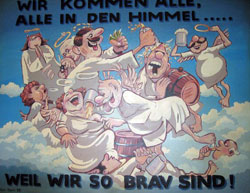 Across from the bar is the smoking section where you can have a meal at one of the padded wooden semi-booths with tables bedecked with red & white checkered tablecloths. Above this seating area hangs the opus work of Laschet’s: a mural on west wall that depicts several rotund “angels” with one of the males pulling down the top of one of the females, exposing her breast in the process. Also on the mural are written the words, “Wir kommen alle, alle in den Himmel… weil wir so brav sind!” In English, this means, “We are all coming, all to Heaven… because we are so well-behaved!” The mural is a sarcastic spin on the old German folk song of the same name, as the subjects in the mural cover all the primary pub-related vices: drinking, smoking, debauchery, violence, greed, and various pranks. Ah, good times. Additional non-smoking seating can be found in the rear of Laschet’s, up a few steps and across from the smallish restrooms set within the western wall. This area is adorned with a melange of German crests, beer signs, a model clipper ship ala John Barleycorn Memorial Pub, mounted deer head, and lone TV. Laschet’s also now features a sidewalk cafe along Irving Park that, unfortunately, is not the best street for this given the four lanes of traffic and exhaust from a never ending stream of CTA buses (the single best way to snarl up traffic), though the grassy median helps make it more pleasant.
Across from the bar is the smoking section where you can have a meal at one of the padded wooden semi-booths with tables bedecked with red & white checkered tablecloths. Above this seating area hangs the opus work of Laschet’s: a mural on west wall that depicts several rotund “angels” with one of the males pulling down the top of one of the females, exposing her breast in the process. Also on the mural are written the words, “Wir kommen alle, alle in den Himmel… weil wir so brav sind!” In English, this means, “We are all coming, all to Heaven… because we are so well-behaved!” The mural is a sarcastic spin on the old German folk song of the same name, as the subjects in the mural cover all the primary pub-related vices: drinking, smoking, debauchery, violence, greed, and various pranks. Ah, good times. Additional non-smoking seating can be found in the rear of Laschet’s, up a few steps and across from the smallish restrooms set within the western wall. This area is adorned with a melange of German crests, beer signs, a model clipper ship ala John Barleycorn Memorial Pub, mounted deer head, and lone TV. Laschet’s also now features a sidewalk cafe along Irving Park that, unfortunately, is not the best street for this given the four lanes of traffic and exhaust from a never ending stream of CTA buses (the single best way to snarl up traffic), though the grassy median helps make it more pleasant.
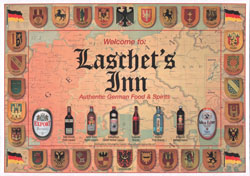 Not only does Laschet’s have a satisfying selection of Teutonic brew, but they also serve some of the best and heartiest German food in the city, all of which is made from scratch. I haven’t had a better Wienerschnitzel than at Laschet’s, and I’ve been to every German restaurant in this city, Milwaukee, and to Germany on seven separate occasions at the time of writing. Add to that the sides of crispy scalloped potatoes and abnormally tasty sauerkraut and you’ve got a big winner. I’ve never had it, but others recommend the Rouladen: mustard and pickles wrapped in tender meat and served with that addictive German side and staple: spatzle. In addition, I recommend opting for the side of cucumber salad to start (surprisingly good though a salad with real bleu cheese is also a good option) and order the Hackepeter for your appetizer (steak tartar, accompanied by mustard, onions and capers). A different dinner special is available daily, all of which is served with a bread basket of warm Lithuanian rye from Bruno’s Bakery in Bridgeport. If you like hot apple strudel, you must have it at Laschet’s, which is served alongside a pool of whipped cream. If you’re lucky, the waiter will bring around an aperitif after your meal in the form of a shot of schnapps. The kitchen at Laschet’s is open until 10:30pm every night except 10:00pm on Sunday. Holy Schnitzel, Batman!
Not only does Laschet’s have a satisfying selection of Teutonic brew, but they also serve some of the best and heartiest German food in the city, all of which is made from scratch. I haven’t had a better Wienerschnitzel than at Laschet’s, and I’ve been to every German restaurant in this city, Milwaukee, and to Germany on seven separate occasions at the time of writing. Add to that the sides of crispy scalloped potatoes and abnormally tasty sauerkraut and you’ve got a big winner. I’ve never had it, but others recommend the Rouladen: mustard and pickles wrapped in tender meat and served with that addictive German side and staple: spatzle. In addition, I recommend opting for the side of cucumber salad to start (surprisingly good though a salad with real bleu cheese is also a good option) and order the Hackepeter for your appetizer (steak tartar, accompanied by mustard, onions and capers). A different dinner special is available daily, all of which is served with a bread basket of warm Lithuanian rye from Bruno’s Bakery in Bridgeport. If you like hot apple strudel, you must have it at Laschet’s, which is served alongside a pool of whipped cream. If you’re lucky, the waiter will bring around an aperitif after your meal in the form of a shot of schnapps. The kitchen at Laschet’s is open until 10:30pm every night except 10:00pm on Sunday. Holy Schnitzel, Batman!
“Instead of a jukebox, German music blares on cassettes, and you can get a Jumbo Chicken Dinner for 30 cents—naturally, it’s a hard-boiled egg, an old bar gag that meets the test of time.”
– excerpt from “Suds Up!” by Bill Granger in the Chicago Tribune (May 22, 1983)
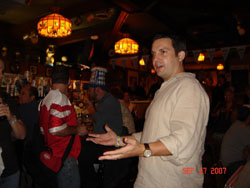 Laschet’s is more of an old-school, German-Chicago neighborhood tavern rather than the lederhosen- and oompah-laden scenes at Chicago Brauhaus and Uberstein (not a bad thing, but different). This classic was purchased and renamed “Laschet’s Inn” in 1971 by innkeeper extraordinaire Karl Laschet, according to those fortunate enough to have drank with him when he was alive. Karl Laschet “The Elder” (his son of the same name also tended bar at Laschet’s) was also prominent in the affairs affecting the Germanic North Side and oversaw the festivities around Chicago’s annual Von Steuben Day Parade. Karl Laschet’s legend lives on in photographs around the saloon, including one depicting him marching with former Chicago “Boss,” Richard J. Daley, and Laschet is also remembered with the honorary, “Karl Laschet Avenue” that runs through the heart of Lincoln Square. In 1991, Laschet’s ownership transitioned to Franz and Ursula Kokott, the latter of which is who you can thank for opening the kitchen at Laschet’s in 2000 after years of, “frying up frikadellen — ground beef and pork patties with herbs and breadcrumbs — and brewing goulash for Sunday football games,” according to Mike Sula’s restaurant review in the Chicago Reader. Matt and Mannie Lodge took over in 2007 and keep the place true to its roots by not changing anything except adding the sidewalk cafe. Laschet’s today still attracts “authentic” German regulars in middle age as well as younger newcomers to the area alike, and occasional visitors who get a kick out of the German “theme.”
Laschet’s is more of an old-school, German-Chicago neighborhood tavern rather than the lederhosen- and oompah-laden scenes at Chicago Brauhaus and Uberstein (not a bad thing, but different). This classic was purchased and renamed “Laschet’s Inn” in 1971 by innkeeper extraordinaire Karl Laschet, according to those fortunate enough to have drank with him when he was alive. Karl Laschet “The Elder” (his son of the same name also tended bar at Laschet’s) was also prominent in the affairs affecting the Germanic North Side and oversaw the festivities around Chicago’s annual Von Steuben Day Parade. Karl Laschet’s legend lives on in photographs around the saloon, including one depicting him marching with former Chicago “Boss,” Richard J. Daley, and Laschet is also remembered with the honorary, “Karl Laschet Avenue” that runs through the heart of Lincoln Square. In 1991, Laschet’s ownership transitioned to Franz and Ursula Kokott, the latter of which is who you can thank for opening the kitchen at Laschet’s in 2000 after years of, “frying up frikadellen — ground beef and pork patties with herbs and breadcrumbs — and brewing goulash for Sunday football games,” according to Mike Sula’s restaurant review in the Chicago Reader. Matt and Mannie Lodge took over in 2007 and keep the place true to its roots by not changing anything except adding the sidewalk cafe. Laschet’s today still attracts “authentic” German regulars in middle age as well as younger newcomers to the area alike, and occasional visitors who get a kick out of the German “theme.”
Being the German bar located furthest west in the North Center-Lincoln Square area, Laschet’s frequently finds itself on the receiving end of pub crawl first-stops. This was the case for the Chicago History Museum Oktoberfest pub crawls that I led, as well as for a series of bizarre pub crawls put on by some South Side friends of mine that included “Sweatfest” (only sweatpants and sweatshirts were allowed – in July!) and “Robefest.” Robefest annually brought out “Creepy Bob” in his powder blue terrycloth robe with daisy print, topped off with a straw hat, and a lad we called “Fake Keith” (we knew several other Keiths at the time, including “The Real Keith” and “Bald Keith”). “Fake Keith” dressed in a sheer black robe that he claimed made him feel “sexy” (something none of us wanted to know).
“For approximately 20 years, Laschet’s has been raising the community’s collective cholesterol level with a steady diet of German stouts, Weiss and sausages. The majority of the patrons are German-born ranging in age from 21 to 80 and come here regularly to laugh in the face of death.”
– Shecky’s Bar, Club & Lounge Guide 2002
If you like Laschet’s, you will probably also like Mirabell, Resi’s Bierstube, Glunz Bavarian Haus, and Huettenbar. For those of you making the trek from the suburbs, parking is easily available down the sidestreets as well as at the meters on Irving. Otherwise, cab it or take the Brown Line to the Irving Park stop and walk about six blocks due west. For more information, check out the Laschet’s Inn website. Be careful of the Killepitsch and guten appetit!
